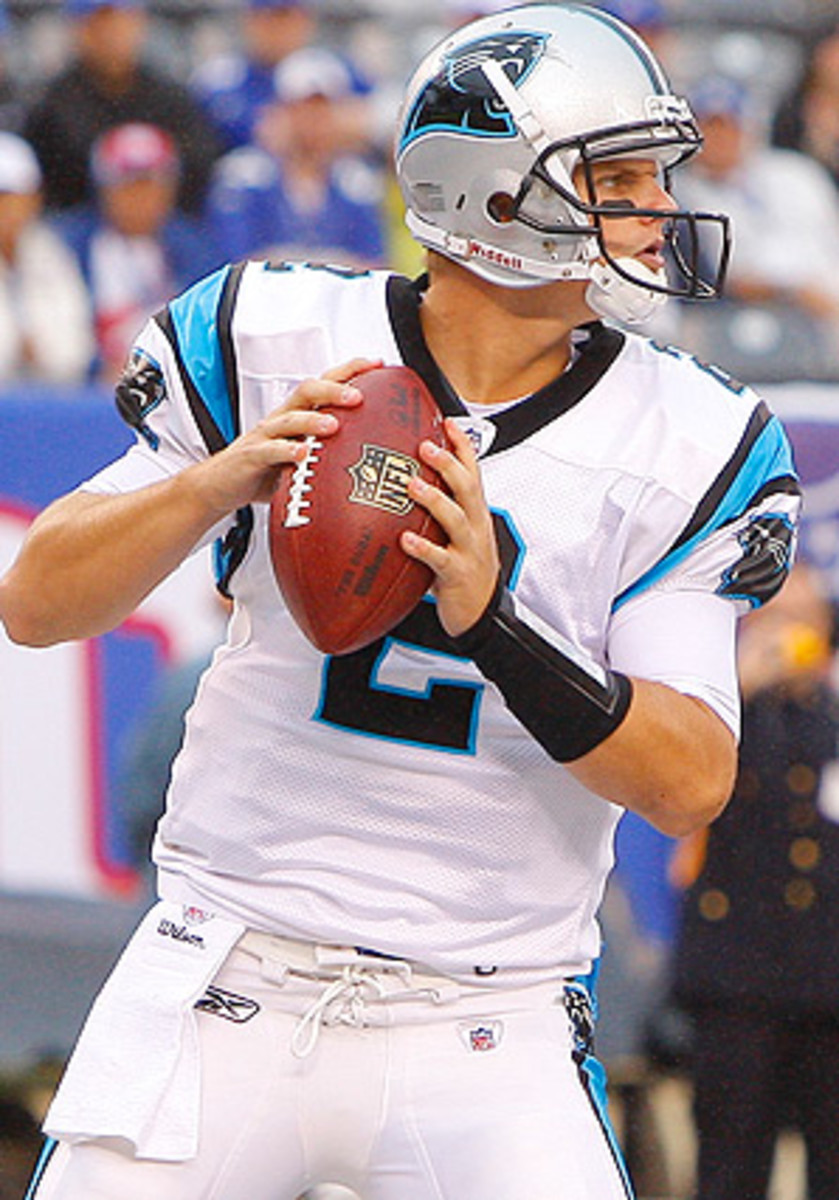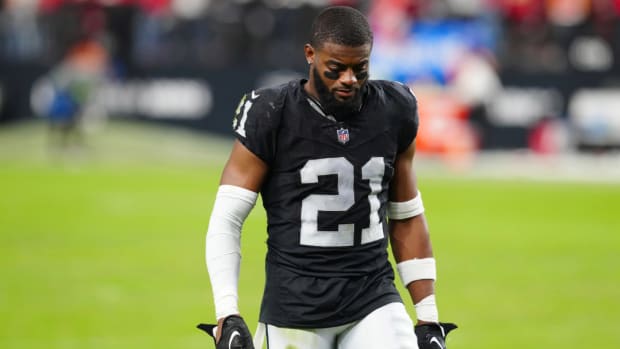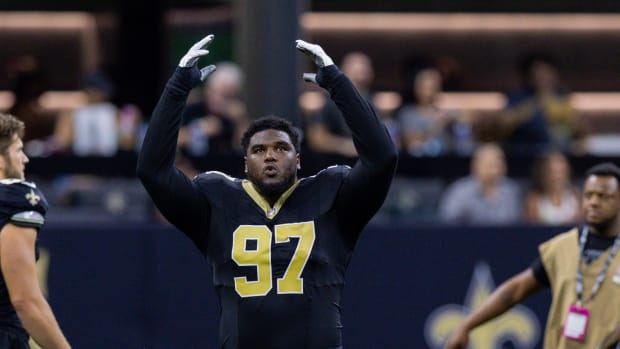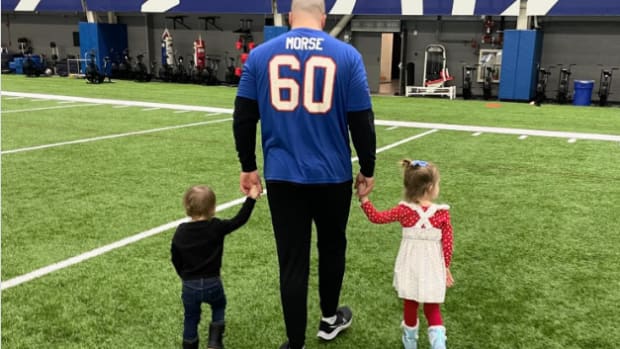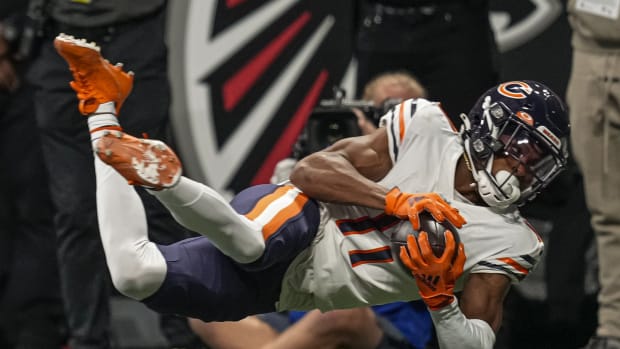NFL draft strategies haven't been affected with recent format change
When the NFL moved the first round of the draft into prime time last year, the perception was that it would create more buzz the following day when the second round kicked off. St. Louis general manager Billy Devaney was among those who thought the overnight break between the first and second round would create more interest and buzz surrounding the 33rd pick, which the Rams owned last year. Maybe not significant interest, but enough to make Devaney sit back his chair, put his hand on his chin and mull an intriguing trade offer.
"We thought we were going to be in a great position," Devaney says. "After the first round, teams always figure out the next day in their minds -- who'sgoing to be there, who do they like, handicapping that this may be our last chance to get a receiver or something, so we better go up and get him. We thought there was going to be this great groundswell for people to make a deal. It turned out to be a downer.
"We got one phone call near the end of the first round saying, 'Hey, we may be interested in doing something. We're talking about your pick for the next day, and we're going to talk about it overnight and get back to you tomorrow.' Well, it worked the opposite way. They thought about it and they said, 'Nah, never mind. We're going to take chances and just hope our guy is there when we pick.' And it turned out well for them. They won."
Yes and no. Carolina got the player it wanted -- Notre Dame quarterback Jimmy Clausen -- but he did not show flashes of being the player they envisioned. In 13 games, including 10 starts, he completed just 52.5 percent of his passes for 1,558 yards and three touchdowns with nine interceptions. His struggles weren't solely his own; the Panthers finished a league-worst 2-14 and were the only team to throw for fewer than 3,100 yards, producing just 2,635.
The point is not to bag on the Panthers or Clausen. Rather it is to say that things aren't always what they seem, particularly when it comes to the expectation that the draft's format change would produce more intrigue at the top of the second round.
2011 NFL Draft order, rounds 1 through 7
"It takes a player being there that a team really likes for something to happen," says Panthers GM Marty Hurney. "It also depends on the depth surrounding that pick. If the grades on [available] players are about the same, teams are less willing to trade up."
"Absolutely no other team called," Devaney says. "Not even like, 'Hey, we might be interested.' But we didn't get a nibble. We were like, 'Come on, come on now. Surely the phone's going to start ringing.' I couldn't wait to get to the office on Friday; I got there and said, OK, here we go. I ended up just sitting there looking at the stinking phone. ...
"As they say, some of the best deals are the ones you never make. We wound up using our pick to take Roger Saffold. I'm not too disappointed."
Saffold, a left tackle from Indiana, started every game for the Rams and established himself as a foundation player for St. Louis, which finished 7-9 and surpassed its win total (six) from the previous three seasons combined. He also protected the blindside of rookie No. 1 overall pick Sam Bradford, the franchise quarterback.
The first pick in the second round this year belongs to New England, which acquired it from the Panthers last year when Carolina traded it for the right to draft Appalachian State wide receiver Armanti Edwards in the third round (No. 89 overall). Will the pick attract more action Friday than it did last year? A handful of personnel executives didn't think so, because there doesn't appear to be a significant difference in talent among the players who'll be available between the top and the middle of the second round.
"Last year was one of those drafts where the players were so close that teams, I'm sure, felt like, 'Why are we going to give something up to make a deal?' " Devaney says. "There really wasn't much difference in value between the first pick in the second round and the 10 to 12 to 15 spots. That was my worst fear, that there was still going to be a lot of good players available in the middle of the second round. It didn't seem like there was that one or two stud players that teams would say, 'Wow, I can't believe that guy is still on the board. We've got to go up and get him.' I kept prepping people as we got closer to the draft, telling them that I don't think there's going to be as much action for this pick as people want there to be."
This year is shaping up much the same way. However if there's one thing that could generate movement, it's a run on quarterbacks. No position makes decision-makers squirm more than potentially losing out on a capable quarterback -- especially if their team lacks one.
Draft Database: Grades for quarterback prospects
"If quarterbacks start flying off the board and teams looking for a quarterback feel they have to go up and get one -- and there will be some good quarterbacks in the top part of the second round -- there might be some movement for them," Devaney said.
At least four quarterbacks are expected to go in the first round, and even if that number expands to five or six, that would leave two or three who could draw interest at the top of the second round. If so, the Patriots and coach Bill Belichick are sure to enjoy the type of intrigue that the Rams and Devaney did not.
































